Emerging Economies Must Leapfrog to Renewables – and They Already Are

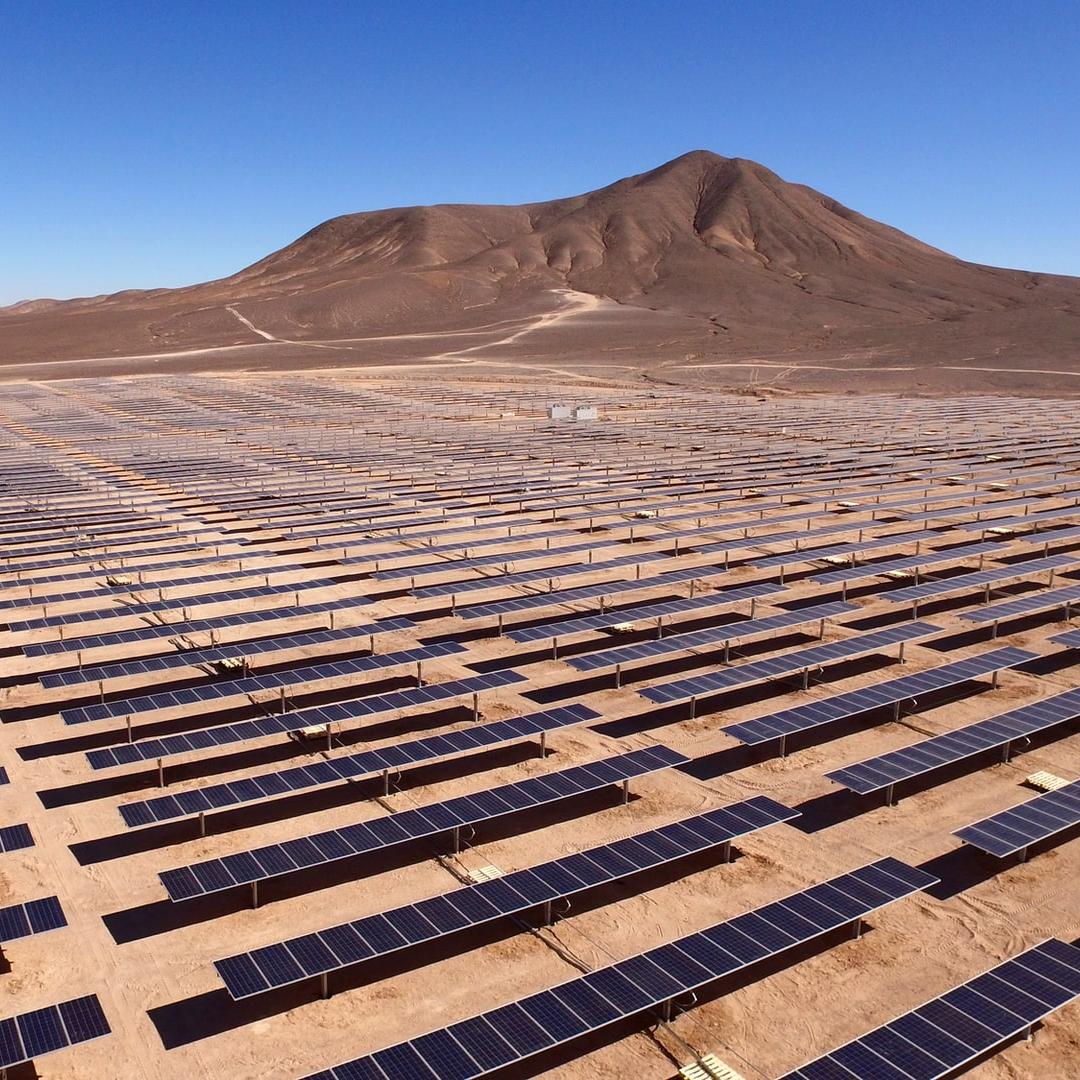
Renewables like solar and wind are quickly becoming more affordable and accessible. The International Renewable Energy Agency (IRENA) reports that the cost of electricity coming from utility-scale solar power fell 82 percent between 2010 and 2019, and clean power technologies such as solar and wind are undercutting even the cheapest coal-fired power plants. Further, a 2020 analysis from BloombergNEF found that wind and solar have overtaken fossil fuels as the most cost-effective form of new sources of electricity in most of the world.
This trend has made “energy leapfrogging” – i.e., the ability to reap a nation’s power needs from renewables such as solar, wind and geothermal at a rapid pace, bypassing heavy investments in fossil fuels and the infrastructure needed for them – ever more possible in emerging markets.
Economies, including several examples in Africa and Latin America, have been transitioning straight from what for many of their communities had been traditional sources of energy like wood, charcoal, agricultural waste and animal dung; these countries are also able to shift rapidly toward renewables as they have not invested in massive infrastructure that supports a national power grid, as was the case with what more industrialized nations in Europe and North America had done during the 20th century.
The result is that more communities within these emerging markets are forgoing conventional energy sources like fossil fuels; the same goes for other forms of energy like nuclear, biofuels and even natural gas.
A recent report from the think tank Carbon Tracker and India’s Council on Energy, Environment and Water (CEEW) highlights progress emerging nations are making in embracing renewables. The report also comes with a warning: If more nations do not leapfrog to these cleaner sources of energy, a worldwide low-carbon economy will not occur.
As the demand for energy grows, leapfrogging to renewables becomes necessary
The International Energy Agency estimates a surge in power generation in emerging nations will boom over the next decade, accounting for the majority of electricity demand by 2030. Thus, a world aiming to reduce greenhouse gas emissions has an incentive to ensure countries like India and China continue their developing infrastructure that is more conducive for renewables.
The authors of this Carbon Tracker and CEEW study find that emerging markets are already stepping away from fossil fuels. “Given the continued rapid growth rate of solar and wind, it is highly likely that emerging markets ex-China have already plateaued or reached peak demand for fossil fuels for electricity. China is likely to peak before 2025,” they write. China may still be a major coal consumer, but its solar sector is growing fast. Countries like Morocco, Nicaragua and Kenya have already made great leaps toward increased reliance on renewables.
Some nations are already leapfrogging to renewables
The Climate Reality Project details how Morocco, Nicaragua and Kenya have been able to turn their power generation sectors into ones that are more sustainable and resilient. Morocco, for one, has set a target of 42 percent renewable energy production by 2021 and 52 percent by 2030. It has stayed on track by building up its solar and wind power infrastructure. The North Africa country, in fact, now hosts one of the largest solar farms in the world.
After experiencing rolling blackouts due to energy insecurity a decade ago, Nicaragua is now on its way to sourcing 80 percent of its electricity from sources of renewables. By late 2020, Nicaragua’s burgeoning geothermal industry had brought the nation to 72 percent reliance on renewable energy sources.
Energy accessibility has been expanding in Kenya as decentralized solar has spread across the nation. The country is also making use of its geothermal power, which may reach 50 percent of its energy mix by 2040.
Clean energy can support a more resilient and healthy economy
These cases show that a dramatic shift to renewable energy can increase energy accessibility and stability. The economic case is significant. IRENA reported in 2016 that a doubling of renewables by 2030 could mean global GDP increases by over one percent, boosts social welfare investments by almost four percent and can add more than 24 million jobs.
While some nations have proved leapfrogging possible and beneficial, the authors of the Carbon Tracker and CEEW study note that there are serious barriers to building renewable energy reliance. Such hurdles include the intermittency of renewable sources, system costs, policies and deeply vested interests — but international actors can make a difference. The report recommends that international policymakers should focus their attention on countries currently dependent on fossil fuel imports that also have governments more amenable to policy solutions.
Finally, the authors contend that such nations are more receptive to a transition than countries that are more politically fragile. They are also in a stronger position than countries with economies largely driven by coal and gas exports. The result is that these countries that have found success with energy leapfrogging can become examples for their neighbors and help to bring more emerging nations closer toward a clean energy future.
Image credit: Antonio Garcia/Unsplash
In San Diego, an All-Electric Tugboat Eyes a 2023 Debut
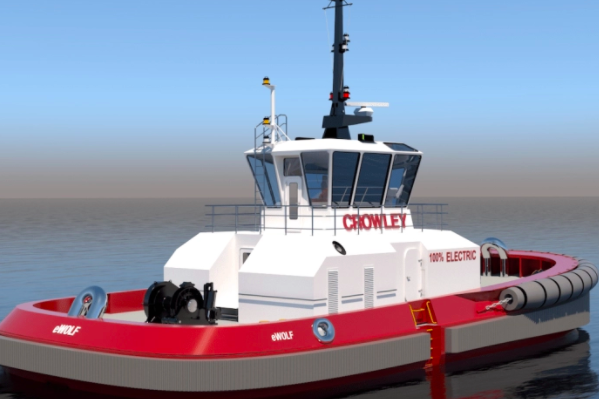

The first fully electric harbor tugboat will soon serve the Port of San Diego. Crowley Maritime Corporation will build and operate the tug, which will be operational by mid-2023. Instead of fuel, the eWolf will reportedly source its power from a 6 megawatt-hour battery bank which will be charged at a special shoreside charging station. The eWolf will replace a tugboat that consumes 30,000 gallons of diesel annually.
According to Crowley, over a 10-year period, the electric tugboat will accomplish the elimination of 178 tons of nitrogen oxide (NOx); prevent the release of 2.5 tons of diesel particulate matter; and could displace around 3,100 metric tons of carbon dioxide (CO2) that otherwise would be emitted into the atmosphere.
The 82-foot vessel will have 70 tons of bollard pull, which is an impressive amount of pulling and towing power. Harbor tugboats are critical for towing, pushing and guiding mega-ships into port. As ships grow in size, they have a difficult time having the agility required at low speeds and in tight spaces.

The size of the average container ship has doubled in the last 20 years, putting more demands on harbor tugs. As global trade continues to surge, so does the volume of goods that are passing through ports.
Maritime shipping is a vital aspect of trade and supply chains and is the lifeblood of the global economy. In fact, an estimated 90 percent of traded goods travel by ship. Although so many of the goods in our homes and offices have traveled to us by sea, including imported food, clothing, electronics, and appliances, consumers by and large don’t notice the incredible amount of logistics required to move goods from their source to our homes and offices. The incident where the Ever Given got stuck in the Suez Canal in March 2021, was a reminder of how the scale of shipping is ever increasing and the ripple effects of one bottleneck.
Ports are also a source of air pollution and greenhouse gases as ships sit idle, tugboats maneuver ships into port, and heavy-duty trucks zoom to and from the docks. As a result, neighborhoods near the Port of San Diego, such as Barrio Logan, have some of the highest diesel pollution rates in California.
These emissions are causing lung cancer, asthma, and chronic heart disease. In Barrio Logan, the asthma hospitalization rate is roughly 2.5 times the national average. The neighborhood is surrounded by numerous major sources of pollution, due in a large part to hazardous zoning regulations that allow for this mixed-use neighborhood to have residences and industry side-by-side.
Historically, communities of color have been located next to some of the most contaminated neighborhoods, resulting in grave health issues. The South Bay area near the Port of San Diego is largely comprised of low-income communities of color, raising environmental justice concerns.
These port-side neighborhoods are disproportionately saddled with the air pollution associated with global trade and North American distribution. The Port of Los Angeles has been able to significantly reduce airborne pollutants in recent years, sparking optimism.
A recent report by the California Air Resource Board for the San Diego Air Pollution Control District (SDAPCD) of preliminary health risks estimates that in the Barrio Logan and National City neighborhoods, diesel particulate matter causes 84 percent of the neighborhoods’ cancer risks. To that end, the SDAPCD seeks to adopt a visionary Community Emission Reduction Plan (CERP), which would exceed state zero-emission vehicle goals and create strategies to reduce nearby communities’ cancer risk. Although the plan is being heralded by many for promoting environmental justice and positive change, others are concerned it will take too long and that immediate action is urgently needed.
“Similar to the San Pedro Bay Port Complex and the Port of Oakland, the [port] district has relied on plans and partnerships to develop a variety of emission reduction projects and programs on port tidelands,” stated Port of San Diego district staff. “As laws, regulations, and technologies continue to change, it’s important for the district to have a broad, comprehensive and flexible strategy that helps it prioritize clean air initiatives in a manner that supports maritime business objectives.”
Although dramatically reducing pollution in nearby communities is a complex issue that largely relies on reducing truck emissions, the eWolf is clearly a step in a cleaner direction. Considering the scale of the issues at hand and the high impact on portside communities and beyond, zero-emission innovation is critical. This all-electric tugboat is a step towards a cleaner transportation industry.
Image credits: Crowley
In Sun-Drenched Greece, Carlsberg Pilots Solar Thermal Technology


Taking advantage of what is still plenty of untapped solar energy in Greece, Carlsberg Group is installing what the company says is the most efficient solar thermal system currently on the market. The system will produce heat, reducing the use of fossil fuels in the process, and it could be a big step toward Carlsberg’s goal of zero carbon emissions in its breweries by 2030.
The benefits of solar thermal technology
The solar thermal collectors will be designed and manufactured by Absolicon, a Swedish company specializing in industrial heating processes. In an interview last year, Absolicon CEO Joakim Byström said breweries, dairy processors and the textile industry are ideal applications for this technology.
Although many companies are switching to renewable electricity, heating often consumes the lion’s share of the total energy consumption in these industries, largely due to the need to wash bottles or textiles, heat ingredients, or pasteurize products. Other industries that could benefit from solar thermal collectors include mining, desalination, pulp and paper, and pharmaceuticals.
Carlsberg, a multinational Danish conglomerate that owns dozens of beer brands, aims to generate 100 percent of its electricity from renewable sources at its breweries and to use zero coal by 2022. The company says it is examining many critical areas of sustainability, looking far beyond clean electricity.
Carlsberg builds on its sustainability track record
In addition to its focus on clean energy, the company is also implementing water conservation measures, especially in high-risk areas. The company has also taken on other sustainability projects. For example, Carlsberg is partnering with WWF to address the loss of sea grass, an understated carbon sink. The company has also rolled out snap packs that are held together by glue, not plastic wrap or rings.
As far as its investments in renewables go, Carlsberg’s use of solar thermal technology is appealing because it can be used to retrofit existing systems, reducing upfront costs.
Absolicon designed its solar thermal systems to integrate with existing equipment, creating a hybrid approach. These arrays specialize in emissions-free heat and steam for industrial applications, with temperatures up to 320 degrees Fahrenheit (160 degrees Celsius). When sufficient solar resources are not available, a plant’s management team then can turn to already existing equipment to generate heat.
Unlike solar photovoltaic technology, which produces electricity, solar thermal collectors generate heat by concentrating the sun’s energy. The most efficient solar photovoltaic panel currently on the market is 23 percent efficient in converting solar energy into electricity. By contrast, Alsolicon’s T160 solar collectors are 76 percent efficient in converting solar energy to heat, according to the manufacturer. Whereas solar electricity is stored in batteries, solar thermal heat is stored in tanks. Then, heat is transferred using a heat exchanger through pipes.
A boost for renewables investment in Greece
In 2020, Greece added 913 megawatts of solar electricity capacity and is a rapidly growing solar energy market. In December, the Greek government approved four new renewable power projects as part of its drive to recover from economic shocks that resulted from the global pandemic.

As the country seeks close to an additional $12 billion (10 billion euros) in clean technology investments, Greece is also attracting leading clean energy players such as Masdar, which in May agreed to a 65-megawatt solar photovoltaic plant in partnership with a Finland-based firm.
The Carlsberg project could help advance the country’s solar thermal industry.
Why the potential of solar goes far beyond electricity
The exact financial and carbon emissions savings of these solar thermal systems depend on the energy source they displace. In some countries, oil is used to fuel these heating processes, the use of which comes with a massive carbon footprint. These solar thermal systems can have a payback period as short as three years, depending on the circumstance.
When thinking of renewable energy, a huge emphasis has been on solar electricity, said Byström of Absolicon. Although this is undoubtedly an essential aspect of the clean energy movement, electricity accounts for 30 percent of global energy consumption. By contrast, heating and cooling comprise 49 percent of the world’s total energy usage, thus presenting a critical area to address in order to slow climate change. If Alsolicon’s technology is successfully deployed in industrial processes, it could be instrumental in companies meeting zero-emissions goals.
Image credit: Carlsberg Group and Absolicon; Dragos Gontariu/Unsplash
Think Globally, Act Locally: This Mom’s Fight for Digital Equity is a Lesson For Us All
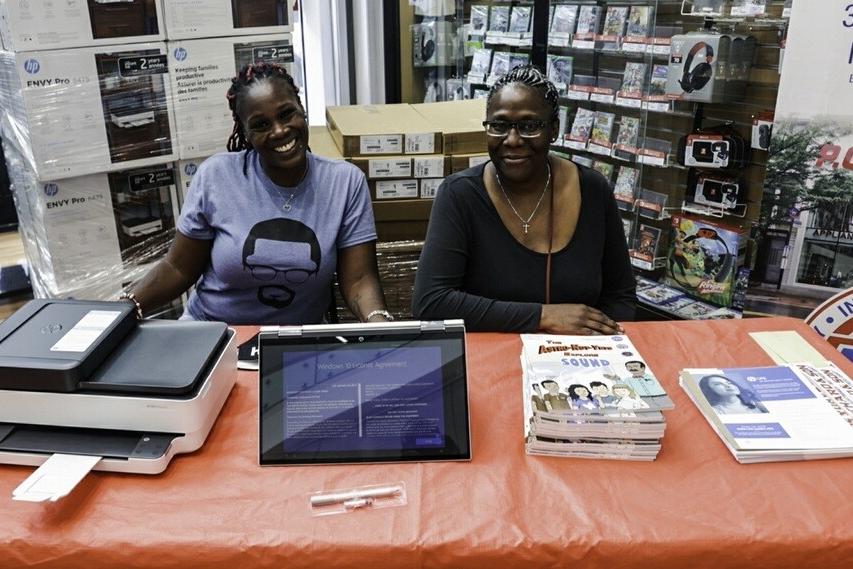
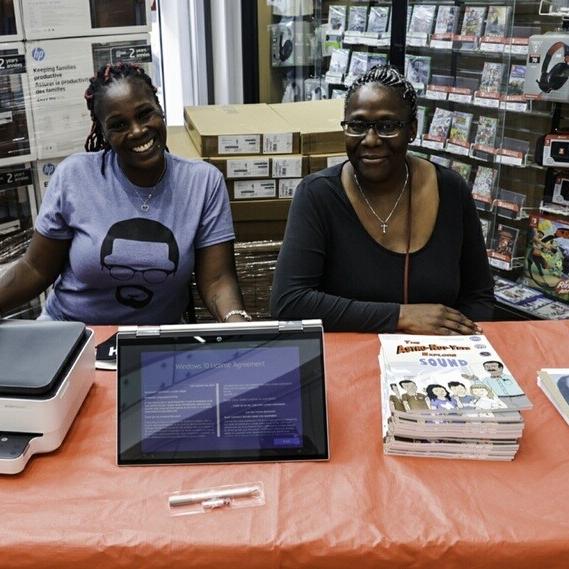
Image: Tanesha Grant (left), founder of the digital equity nonprofit Parents Supporting Parents NYC, and PSPNY Senior Advisor Elzora Cleveland at a recent technology giveaway event at the PC Richard & Son Harlem Superstore in New York.
“I’m not supposed to be here,” says Tanesha Grant, founder of Parents Supporting Parents NYC, a nonprofit aiming to help New York City kids bridge the digital divide. “I was supposed to be that left-behind child, a foster child, but I’m here, lifting my voice and lending my experience with school as a Black woman in this country.”
Although digital equity was an issue long before COVID-19, the pandemic and the forced shift to online schooling made the impacts of the digital divide on children more apparent. When Grant saw how children in her community of Harlem, New York, were being affected, she decided to take action.
A mom’s fight to bring the right tools to every child
Growing up in the foster system and the child of a closed adoption, Grant felt left behind on many levels. In school, she says she was taught that Black people didn’t do anything of importance in history, but when she started to educate herself on Black leadership, a world of opportunity opened.
Seeing Black and Brown children in her community, including her 13-year-old son, suffer from digital inequity in their education brought those memories to the surface. “I see the digital divide as the new textbook,” she told TriplePundit. “We are denying our children the right learning tools.” According to recent Pew Research findings, 41 percent of low-income U.S. households do not have a computer in the home, compared with 8 to 16 percent of homes with incomes over $30,000. Schoolchildren in New York City alone are estimated to need more than 77,000 devices, not to mention internet access.
In September 2020, Grant launched a fundraiser with teachers, educators and educational justice advocates in her neighborhood, and she started giving away her first laptops a month later. To date, she has gifted $87,000 in laptops to children without a computer at home, about 300 devices in all.
Similar to the divide between those who have a computer at home and those who don’t, Pew found that 43 percent of low-income households do not have access to broadband internet. While typically thought of as a rural issue, major cities also suffer from lack of or intermittent internet access. And what is available is sometimes out of reach for low-income households. New York Gov. Andrew Cuomo, for example, “set up $15 a month internet, saying that was affordable,” Grant told 3p. “But for a lot of families, that $15 is the choice between internet and groceries. That’s privilege to think that’s affordable.”
Expanding access to inclusive curriculum
Hardware and connectivity are only the beginning, Grant said: “The digital divide also means access to accurate curriculum.” Learning about leadership and success in Black communities across the country, and from powerful Black voices like Toni Morrison, empowered Grant to find the confidence to speak up where she sees inequity. “Lived experience in our own voices makes a difference in the curriculum,” she said.
“A lot of times, non-white people are written out of the curriculum, or only taught from a place of despair,” putting Black children at a disadvantage and leading them to think both the past and the future are inaccessible for them. “Black children need to know the success stories,” Grant explained. To that end, Grant scores curriculum using the Culturally Responsive Curriculum Scorecards developed by New York University’s Metro Center. The scorecards help parents, teachers, students and community members evaluate the extent to which non-white narratives are taught to schoolchildren in districts around the country. In the future, she hopes to act as a facilitator to help school systems better integrate appropriate curricula.
Curriculum that fails to truly resonate with kids is hardly unique to the United States. Globally, an estimated 250 million children leave school without being able to read, often because they lack reading materials they can relate to, or even understand. “Globally, children don’t actually have sufficient access to reading materials either at home or at school,” Tanyella Evans, executive director and co-creator of NABU, said during an event co-hosted by 3BL Media and HP last month. “Reading materials that do exist are often not in children's mother tongue, so they’re not in a language that they speak or understand.”
NABU is one of the only publishers of culturally appropriate early-grade books in mother tongue languages. It works with creators around the world to provide reading materials in local languages, which it then shares via a free, low-bandwidth reading app. “Cultural relevancy is a critical part of the conversation around digital equity,” Evans said. “It’s very powerful for children to be able to see themselves in a story.”
How companies can support local leaders in the push for digital equity
Even with national coverage of her work, Grant struggles to draw the attention of local and statewide leaders and major funders. To commemorate Juneteenth this year, she took 10 laptops to Portland, Oregon, where she gave them to five Black girls and five Black boys, but she wasn’t able to break even after paying for the travel costs herself. Her frustration is palpable. “We run on donations. If I don’t get donations, I don’t have the funds,” she told us.
That’s where large companies with equity goals can help bridge the divide. HP is working to accelerate digital equity for 150 million people by 2030 through its newly announced Partnership and Technology for Humanity (PATH) initiative, an accelerator for programs that address the digital divide in the U.S. and around the world. The tech giant is supporting Grant’s Parents Supporting Parents NYC as part of this work, donating more than 300 laptops and printers, along with paper, HP Instant Ink subscriptions, and access to quality learning and skill-building content.
HP is also donating $1 for every attendee (live or on-demand, up to $20,000 total) of an upcoming LinkedIn Live event with Alex Cho, president of HP Personal Systems, Alex Amouyel, executive director of MIT Solve, and Sarah Brown, executive chair of the Global Business Coalition for Education and chair of Theirworld.
HP also supports NABU and dozens of other organizations including Girl Rising, which works to improve girls’ access to education in 12 countries and reached 5 million people in 2020 alone with support from HP.
“Education is a human right, and we must ensure that every student has access to the resources they need to excel. Far too many people are unable to access the technology, connectivity, skills and quality content needed to thrive,” Cho said. “That’s why HP is working to activate innovative solutions and services with a bold ambition to accelerate digital equity for millions.
“Yet we know closing the digital divide will take trillions of dollars and no one company can solve it alone,” he continued. “It requires action across the entire ecosystem: government, private sector, non-governmental organizations — along with passionate, committed individuals, like Tanesha Grant. Together, we can break down the barriers and achieve digital equity for all.”
“I know what it’s like to be left behind…”
In addition to government investment, the digital divide will continue to require private funds and advocacy. People like Tanesha Grant, with a passionate drive to see that every child has the opportunity to succeed, will be key to success.
When asked why she does this work, Grant replied: “I do what I do because I know how it feels to be left behind. I’m here to support Black children, empower them, and give them the self-confidence that they can do anything they want to do with one piece of technology. The kids don’t think they deserve for someone to care about them, but they deserve every opportunity. If you give them opportunities, they will take care of everything else.”
To support Grant’s organization, visit her GoFundMe page.
This article series is sponsored by HP and produced by the TriplePundit editorial team.
Image courtesy of Tanesha Grant and Parents Supporting Parents NYC
Pop the Corks! This Sparkling Wine Now Gives off Flavor Notes of Sustainability

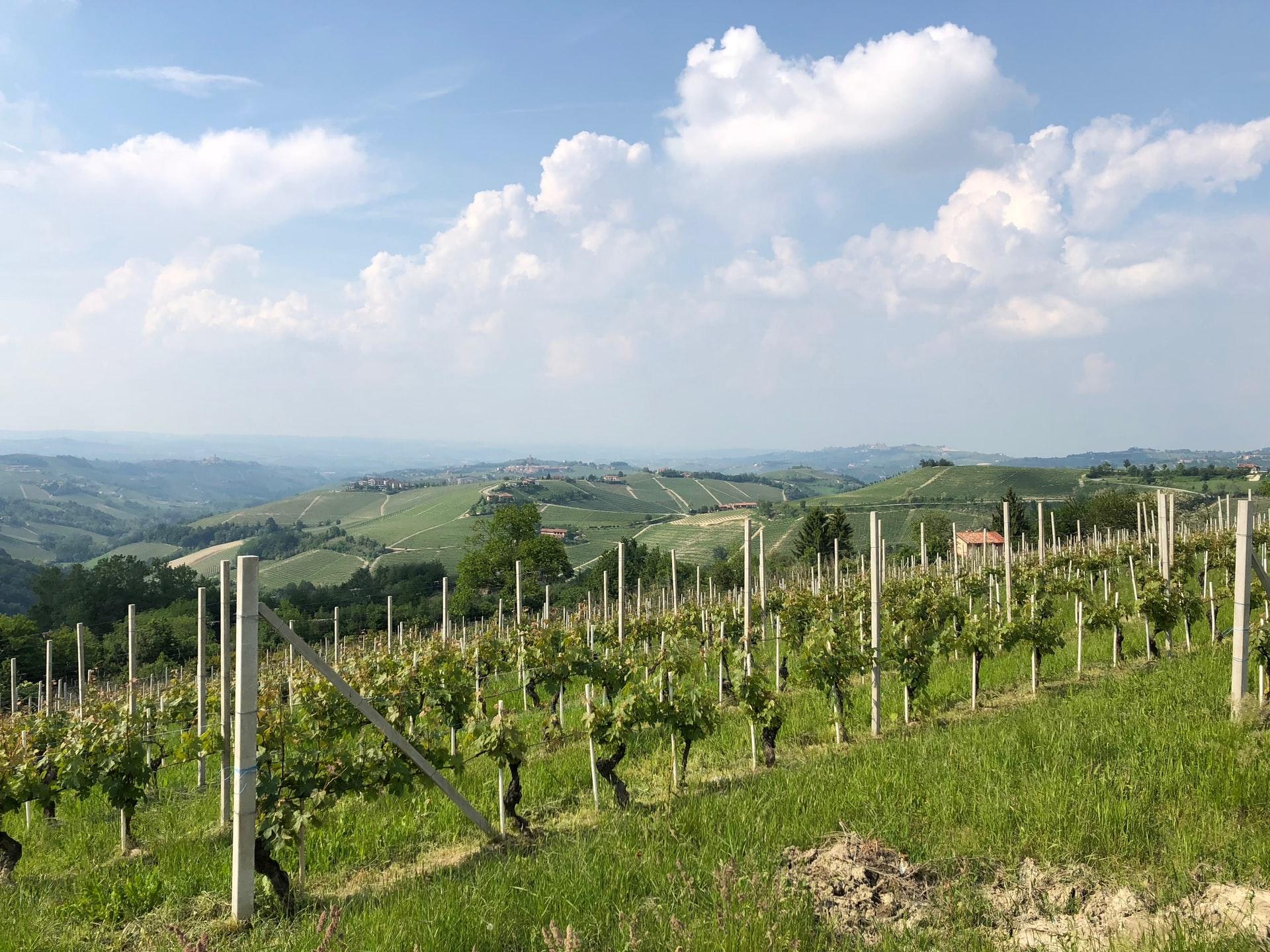
Drink some bubbly to the latest chapter in Bacardi’s quest to become a more responsible company: One of its popular sparkling wine brands announced that all of the suppliers for its key ingredients will be certified as sustainable by the end of this year.
Martini, which of course also churns out that necessity for any bar, vermouth, has said that all of its asti grape growers are on target to score the sustainability stamp of approval from Equalitas, which in recent years has developed a leading sustainability benchmark for Italian wine making. A third party, Valoritalia, has verified that yes, indeed, those Moscato Bianco grapes grown in Italy’s Piedmont region are legittimamente sostenibile.
In fairness, Martini’s operations have already been sustainable and responsible, based on the fact that company has long been sourcing these grapes for its asti sparkling wine from hundreds of small grape growers. Those growers in turn churn the grapes into must, the juice that eventually becomes bubbly. According to the brand, 70 percent of those growers, which are organized into various cooperatives, have already completed the process to meet Equalitas’ standards; the rest are on course to meet those benchmarks before 2022. One of Martini’s wineries, which produces almost one-third of that asti must (the juice that eventually ferments and becomes wine), has already completed the entire sustainability process.
It’s not as if Martini and its parent, Bacardi, really have much to prove on the responsible business front. The brand's ongoing relationships with small growers and a quality product speaks to its longevity: Incidentally, 2021 marks 150 years since Martini & Rossi introduced its first moscato spumante d’Asti way back in 1871. Further, Martini has been ahead of many of its competitors in the sustainability race: The brand launched its own business center focused on sustainability practices in 1987.
But as more consumers demand that companies embed sustainability into the sourcing and production of their favorite products, market forces are at play here. It’s not enough to rely on tradition or source from family farms – consistency in manufacturing, proof that products are made responsibility and third-party verification are ways in which companies can prove to their customers that their products are legit. That goes for just about any gadget, food or drink, including sparkling wine. Companies must face the reality that they must respond to consumers' questions and concerns in kind.
“We have worked closely with the same farming communities growing the finest Moscato grapes in the same beautiful hills for generations – in fact for the last 150 years,” said Giorgio Castagnotti, Director of the company’s operations center in Pessione, Italy, “and we want to continue to do so for generations to come. It’s always made sense then for us support our grape growers through our sustainability initiatives.”
While many beer, wine and liquor brands are still centering their corporate responsibility efforts on responsible drinking, Bacardi has long checked that box and shows how a company in any sector can integrate the social, environmental and economic pillars of sustainability. Last year, as the pandemic devastated the restaurants and bars alike, the company launched an effort to take on youth unemployment while continuing to integrate environmental responsibility tactics within its internal employee engagement programs. The company has also rolled out compostable bottles and even deployed a campaign around an emoji to raise awareness about environmental challenges.
Image credit: Michael Heintz/Unsplash
Lululemon Takes an Upward Facing-Dog on Fabric Made from Recycled Emissions


Twyla: “I didn't know they'd make us change out of our own workout clothes.”
Jocelyn: “Yeah, I kinda wish I knew that before I spent all that money on my LuLu Limes.”
No, this wasn’t overheard at yet another high-end yoga studio, just banter from the final season of Schitt’s Creek. But speaking of workout clothes, in the coming years we can expect to see more athleisure wear, and all types of apparel, period, become made out of materials that are sourced by carbon emissions.
To that end, the real Lulu Lime, i.e. Lululemon, recently announced that it will partner with LanzaTech to develop yarn and textiles made out of recycled carbon emissions that if not captured, would otherwise be released into the atmosphere as pollution.
According to LanzaTech, it can capture carbon from various feedstocks, including synthetic gas, industrial emissions, agricultural and household waste, not to mention other sources of carbon that have already been emitted into the atmosphere. Microorganisms that the company has developed can then transform those carbon molecules into ethanol and other base ingredients that will eventually become fabric.
The result is a synthetic material that yoga devotees - and really anyone who works out regularly can tell you – provides the comfort, moisture wicking and yes of course, flattering shape and fit that are absolutely necessary for those requisite TikTok videos as well as Instagram posts and stories. However, Lululemon and LanzaTech say that instead of requiring virgin petroleum to manufacture these fabrics, the end result can help keep those hydrocarbons in the ground.
A similar process LanzaTech developed earlier this year has resulted in a laundry detergent that Unilever has rolled out in India.
Other companies have touted their green chemical processes as ways to manufacture just about anything from bioplastics to even vodka.
For Lululemon, assuming this partnership with LanzaTech will thrive, this alliance could help the company meet its various long-term sustainability goals, which range from procuring 75 percent of its materials from more sustainable sources by 2025 to offering a more circular resell/repair/recycle model for its customers that same year.
Image credit: LanzaTech
Could Artificial Intelligence Improve the Taste of Plant-Based Protein?


As more fast food restaurants continue to experiment with plant-based protein alternatives - Little Caesars’ 'Planteroni' Pizza in a partnership with Field Roast being one of the most recent examples – plenty of consumer still haven’t bought into the fake meat craze.
Part of the problem behind consumers’ stubborn resistance to adopting more of a plant-based or “flexitarian” diet is the common, and fair, complaint that many of these meat alternatives taste “off.” Soy-based patties can leave an unpleasant aftertaste, and never mind the crumbly texture. Beyond Meat’s fake chicken of yesteryear offered notes of carrots, frozen peas and fava beans, and not necessarily in a good way. And while Beyond’s and Impossible Foods’ plant-based protein substitutions for burgers are about the closest thing one can get to the real thing, the coconut oil can result in traces of sweetness that can be off-putting. Of course, all of these are improvements over the veggie burgers from many years ago, which would have tasted far better if they were allowed to remain as vegetables.
But what if flavorings could help make these new and future plant-based protein products more palatable to more consumers? After all, the companies that are driving the multi-billion dollar global flavor and fragrance industry keep developing ingredients that are increasingly more sophisticated and are in just about in every product we put in or on us. Many of us are already taking such action in our kitchens – vanilla extract, for example, is a common ingredient in our cupboards because it easily binds to proteins without giving off its flavoring – and it masks other flavors that could otherwise taste unpleasant.
Now, let’s add another challenge, and one that if overcome, could help plant-based protein scale up: which of course would help wean more consumers away from the carbon- and water-intensive meat and dairy industry.
One hurdle that food companies face is that developing new products that will eventually be accepted by the masses can take years. But what if that process could be shortened by harnessing the potential of artificial intelligence (AI)?
To that end, Firmenich, the Switzerland-based fragrance and flavoring giant, says it’s on a path toward improving the taste of plant-based protein products.
The company recently announced the launch of what it says is the first flavor developed by AI, a “lightly grilled” beef taste that could be used in plant-based foods. Emphasis should be put on “lightly grilled,” as yet another complaint of fake meat is that no matter how it’s cooked, it can often leave diners with a cringeworthy charred taste.
Firmenich is understandably mum on what flavor notes are exactly in this new AI-induced flavor profile. Nevertheless, the company could provide that final piece of the puzzle to companies that seek to recreate the flavor and texture of meat: and not 95 percent, not 99 percent, but a 100 percent success in copying meat’s flavor profile. So far, companies like Beyond and Impossible Foods have pretty much nailed the texture part. What has proven to be difficult is finding that complexity behind the flavor of meat, which includes countless factors such as umami, fat and of course, how it was cooked, such as on a flame or in an oven. And, as we all know if we don’t follow directions, the way in which we cook our foods can affect the flavor: so, these plant-based foods need to hold their flavor profile as much as possible whether they are grilled, baked, toasted or out of desperation (ew!) even microwaved.
A company like Firmenich has the advantage of access to a wide range of flavorings within its labs. What it does not have is the time to test out the infinite number of flavor combinations. Therein lies the power of AI – the company recently described its database of flavorings to Phys.org as a “piano with 5,000 keys” that through algorithms allows its staff to test out different combinations. The results could include even more plant-based options coming soon to a supermarket near you.
Image credit: Rolande PG/Unsplash
The U.S. Vaccination Slowdown Is More of a Structural Than Political Problem


The quest for herd immunity against COVID-19 has a hit a wall as the timing of the vaccination slowdown arrived just as the Delta variant is causing another surge across much of the U.S.
But despite all their noise and dominance on social media, it’s not only right-wing anti-vaxxers who are behind the stall in vaccinations across the U.S.
According to a recent Axios report, it turns out that this vaccination slowdown is due to the reality that many Americans who struggle to make a living are also having a difficult time getting those jabs in their arms.
Axios’ Bob Herman based his conclusions on data from the U.S. Census Bureau, which found that close to 60 percent of the unvaccinated population has a household income of $50,000 dollars or less. “Vaccination has been politicized, but juggling work schedules and child care could be bigger factors than politics,” wrote Herman.
Much of the service industry, specifically retailers and the restaurant sector, shoulders much of the blame for the vaccination slowdown that soon enough could morph into yet another full-blown public health crisis.
With a few notable exceptions, many of these companies continue to complain about their difficulty in finding new workers, even though the truth is that many of them have decided on finding a new employer, or they completed online training with the goal of finding a completely different line of work.
Add a report from the Pew Research Center from earlier this year, which found that getting a vaccine is easier when one has access to paid sick leave – which almost one-quarter of U.S. workers, or almost 34 million citizens, do not have. Among the industries that rank toward the bottom when providing their employees paid sick leave are the service industry and construction sector.
Part of the problem is the patchwork of employment laws across much of the U.S., which can lead to confusion over what is mandated and what is not. But another piece of the puzzle is many companies’ reluctance in providing their employees the time off to schedule, receive and often recuperation from the vaccine. Plenty of employers will tout that will give two hours or even a half-day to score a COVID-19 vaccine. But as many people who are already vaccinated can tell you, that morning jab may not hit you like a ton of bricks until later that day or evening: Hence the more forward-thinking employers are the ones that at minimum will offer a sick day gratis to make sure their employees can feel better before they return to their jobs.
Some employers may respond to any criticism by saying they are offering a financial bonus for workers to get vaccinated. But any such bonus really won’t make a difference if that worker living paycheck-to-paycheck cannot get the necessary time off in the first place – and therein lies the reason for this hamster wheel, otherwise known as the stubborn U.S. vaccination slowdown.
Image credit: Marisol Benitez/Unsplash
Momentum Grows for a Federal Clean Electricity Standard


As more consumers clamor for climate action, manufacturers and other big ratepayers are in a squeeze. They want to compete for customers, and they could do it by purchasing clean electricity. However, without a federal clean electricity standard, corporate energy buyers are faced with a patchwork of state regulations that hinder progress, create cumbersome obstacles and discourage renewable energy investment.
Support grows for a federal clean electricity standard
President Joe Biden supports a federal clean electricity standard. It was left out of the infrastructure deal so now attention is turning to the budget reconciliation process, and energy stakeholders have been jockeying to include their priorities in the legislation.
Last April, for example, a group of public and private sector power producers wrote to President Biden and argued that a federal clean power standard would provide energy investors with certainty, helping to accelerate progress toward the President’s goal of cutting power sector emissions by 80 percent reduction in emissions compared to 2005 levels by 2030.
However, they also pointed out that the availability of wind, solar and other renewable resources varies from one place to another. They made the case for a federal clean electricity standard that provides for flexibility and feasibility.
In a further indication that the April letter represented a cautious approach, one of the signatories was Calpine Corporation, which owns a sprawling fleet of 76 power plants in operation or under construction in 22 states plus Mexico and Canada.
Though one of its power plants deploys geothermal energy, Calpine relies heavily on natural gas as a lower-carbon power generation resource. Unfortunately for natural gas stakeholders, the lower-carbon argument is falling apart as evidence grows on the extent of methane emissions issues stirred up by the natural gas industry, including local air pollution impacts as well as global warming risks.
The green hydrogen trend could enable power producers like Calpine to substitute renewable hydrogen gas for natural gas in power plants. However, the global supply of green hydrogen is still vanishingly small, and the scaling up of this technology is years away.
Reading between the lines, the April letter seems more focused on preserving the role of natural gas in pushing coal out of the power generation sector over the near term, rather than advocating for a more rapid transition out of all fossil fuels.
Electricity buyers write letters, too
A new letter obtained by Politico last week takes a more aggressive approach. Addressed to Congress, the new letter urges “support for a Federal Clean Electricity Standard that will transform the U.S. electric power grid to 100 percent clean energy by 2035.”
“Passage of a federal clean electricity standard will drive large amounts of new renewable generation and do so in a way that provides businesses with a clear path and expectation to make needed investment as the scale and speed necessary,” the letter argues.
The letter caught attention in the media because it was signed by scores of leading corporate electricity buyers, including Apple, Ben & Jerry’s, DSM North America, General Motors, Google, Levi Strauss & Co., Mars, Salesforce, Tesla and Unilever.
Interestingly, none of the signers of the April letter participated in the new letter with the exception of Holy Cross Energy, a rural electric cooperative base in Colorado. As with other utilities of its type, HCE is encumbered by long term contracts that continue to sustain fossil energy use. Nevertheless, it has succeeded in integrating a significant amount of renewable energy.
HCE is also involved in at least two potentially game-changing areas that would a federal clean electricity standard. One is the development of a suite of experimental grid controls that would enable a “hard pivot” away from centralized power plants. HCE is working with the National Renewable Energy Laboratory on that project.
The other area is the “coal-for-solar swap” model adopted by the firm Guzman Energy, which enables power producers to disencumber themselves from long term fossil energy contracts without making onerous up-front payments.
No country for natural gas
Also of interest is the new letter’s emphasis on a federal clean electricity standard that tosses natural gas out of the clean power bucket. The signers simply do not want natural gas included in a “clean” electricity standard.
“The electric power sector accounts for one-half of U.S. natural gas consumption, a major driver of upstream leaks of methane,” the letter points out.
“Methane is a potent greenhouse gas 84 times more powerful than carbon dioxide in its first two decades after release. Researchers estimate that methane from human sources is responsible for at least a quarter of today’s warming,” the letter emphasizes.
What about compliance?
This firm position against natural gas by some of the nation’s top corporate energy buyers is a welcome change from the “all of the above” decarbonization strategy advocated by former President Obama. It is also a giant step in the right direction after former President Trump’s efforts to coddle gas producers, which included the relaxation of methane emission rules.
However, the new letter leaves out the key issue of compliance.
The Environmental Defense Fund (EDF) and other advocates for a federal clean electricity standard argue that an enforceable compliance structure, complete with penalties, is the only way to ensure that the energy transition continues to accelerate.
“The U.S. cannot get where it needs to go on climate through investments alone. Incentive-based policies can only go so far, and a payment-only strategy cannot provide the certainty we need to ensure that the power sector becomes the backbone of a clean economy,” EDF argues.
“Financial incentives cannot be a substitute for strong standards that ensure pollution cuts and secure the deployment of clean energy, and Congress should not offer off-ramps or alternative compliance payments as a substitute to achieving the required outcomes,” adds EDF.
Where are the votes?
Realistically, it appears that financial incentives will win out over penalties.
Democrats have the majority in both houses of Congress, so they could pass a budget through reconciliation with the clean electricity standard, even if no Republicans vote with them.
However, Democratic senators from gas-producing states, like Joe Manchin (D-WV), are likely to dig in their heels against an enforceable standard with penalties. As a result, if a clean electricity standard is included in the budget, it will most likely provide for significant flexibility and it will focus on incentives, not penalties.
That may sound like pretty weak tea, and it is, considering that the impacts of catastrophic climate change are already occurring in the U.S. and other parts of the world.
Nevertheless, the new letter sends a strong signal to Senator Manchin and other policy makers from some of the top employers in the nation. These job creators are ready and willing to throw natural gas under the bus for the sake of climate action, and members of Congress who want to grow the job market for their constituents back home would be wise to do the same.
Image credit: Ruben Gutierrez/Unsplash
There’s a Labor Shortage? Tell That to This Successful D.C.-Based Pizza Chain


Among the daily headlines is talk about the labor shortage that is bedeviling many businesses across the U.S. Shares on social media that discuss a struggle to find workers, or the mismatch between jobs available and the work many people are seeking, are often followed by snark about “lazy people looking for handouts” or “free government money.” The truth about this volatile job market and perceived labor shortage, however, is far more complex.
Employees across the U.S. had already become fed up with living a life with irregular work schedules that came with terrible pay. As the pandemic exacted a toll on essential workers starting well over a year ago, many also received the message that the types of work available to them would be vastly different come 2021 and 2022. Add the harassment far too many had to endure during the worst stages of the COVID-19 crisis, and it is no wonder that more of them searched for a new line of work or sought online training with the goal of finding a different type of employment.
Is this a labor shortage, or impatience with low wages?
But while retail and restaurant managers complain that they cannot find enough workers to keep their businesses running smoothly, one East Coast pizza chain is actually doing quite well — and it has its own response to complaints about labor shortages.
&pizza has taken a divergent route from many of its competitors. Instead of talking about workers in the abstract like a Wall Street analyst or corporate CEO on a quarterly earnings call, the company’s CEO, Michael Lastoria, has insisted that he wants the company to achieve social good while serving good pizza. Currently, &pizza workers start with an hourly wage of $16. The company has bold plans for expansion, and Lastoria has claimed that &pizza has received about 100 job applications for each new opening.
Editor's note: Be sure to subscribe to our Brands Taking Stands newsletter, which comes out every Wednesday.
In a recent profile on Business Insider, Lastoria dismissed the conventional corporate wisdom about fast-casual restaurants, a sector that has long relied on low wages, the exploitation of staff, and high salaries and bonuses for the very few working in the C-Suite.
What kind of shortage is this, again?
In addition to paying a competitive wage, &pizza says it also offers healthcare benefits (including a vaccine bonus) as well as paid time off for participating in activist causes. During the pandemic the company also reportedly offered expanded sick time and $5 Lyft rides to work.
"There isn't a labor shortage, there is a shortage of business owners willing to pay a living wage,” Lastoria told Insider’s Zahra Tayeb. "Higher wages lead to greater consumer spending and greater workforce productivity, things every company benefits from."
The approach &pizza and Lastoria have taken toward the chain’s employees is the reality many businesses across the country must learn to embrace. Labor shortage or not, it's a different work environment now.
While some Americans found comfort during the pandemic, many suffered
One massive change that marked 2020 is that many white-collar professionals waxed on about the changes involved with working from home, which included more family time, additional time to connect with nature and achieving that evasive work-life balance. The positive and celebrated changes they enjoyed, however, came at the expense of countless essential workers who often found themselves working twice as hard, subjected to more risk, yet not receiving compensation commensurate with what they had to put up with day after day.
With more workers realizing that they are deserving of a workday with dignity no matter their education, job experience or level of skills, &pizza's success shows how the entire restaurant industry is in need of a reset. Low hourly wages in exchange for the promise of tips no longer has the pull it once did, especially as consumers too often act as if taking a seat in a restaurant entitles them to cheerful service from wait staff. Enough restaurant guests feel they can behave any way they wish if they are paying a gratuity, including one disturbing trend Fast Company has called “maskual harassment.”
It might be time for U.S. restaurants to adopt the standard that many restaurants overseas have long taken: Add a 10 percent service charge to the tab and pay employees a higher hourly wage. After all, no one should feel entitled to a cheap meal — and no one should feel as if they can behave cheaply while visiting a restaurant, either. &pizza gets it. It’s finally time corporate America hears this, too.
It's not a labor shortage. It's more like a labor liberation.
Image credit: &pizza/Facebook